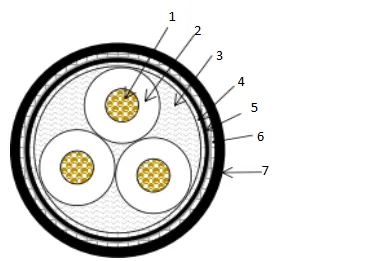Nov . 26, 2024 14:35 Back to list
Understanding Three Core Cable Wiring for Efficient Electrical Connections and Safety
Understanding Three-Core Cable Wire A Comprehensive Guide
Three-core cable wire is an essential component in many electrical applications, offering versatility and safety in installation and usage. This article delves into the characteristics, applications, benefits, and installation tips associated with three-core cable wire to provide a comprehensive understanding of its significance in modern electrical systems.
What is Three-Core Cable Wire?
As the name suggests, a three-core cable wire comprises three conductors. Typically, in the context of electrical systems, these wires are often color-coded for easy identification. The conventional color coding in the UK, for example, includes brown for live, blue for neutral, and green/yellow for earth. This designation helps minimize the risk of errors during installation and ensures compliance with safety standards.
Three-core cables are designed to handle various voltages and are usually insulated with thermoplastic or thermoset materials, which enhance their durability and resistance to environmental conditions. They can vary in size, typically measured in square millimeters (mm²), depending on the intended application and the amount of current they need to carry.
Applications of Three-Core Cable Wire
Three-core cables are incredibly versatile and find usage in various applications across industries. Here are some common applications
1. Domestic Wiring These cables are widely used in residential electrical systems to connect lights, sockets, and appliances. The three cores allow for the safe distribution of electricity, with the earth providing additional safety in case of faults.
2. Industrial Applications Many industrial machines and equipment require three-phase power, which can be efficiently provided using three-core cable wires. Industries that operate machinery often rely on these cables for effective and safe electrical distribution.
3. Outdoor Installations Three-core cables can be designed to withstand outdoor elements, making them suitable for garden lighting, outdoor fountains, and other external electrical installations.
4. Extension Leads A common use of three-core cables is in the production of extension leads, providing safe maneuverability of power supply from outlets to devices that may be positioned further away.
Benefits of Using Three-Core Cable Wire
The use of three-core cable wire offers several advantages
three core cable wire

- Enhanced Safety The inclusion of an earth wire provides an additional layer of safety, which is crucial in preventing electric shocks. Should a fault occur, the earth wire directs current away from users, safeguarding against potential hazards.
- Efficiency With three conductors, these cables facilitate effective current distribution. This is particularly important in more complex electrical systems where balanced power distribution is necessary.
- Flexibility in Design The ability to incorporate three conductors allows for more compact and straightforward wiring solutions, especially in installations where space is limited.
- Compliance with Regulations Using three-core cables often meets various electrical regulations, ensuring installations are safe and legally compliant.
Installation Tips
While three-core cable wire offers numerous benefits, proper installation is crucial to ensure safety and efficacy. Here are some tips
1. Follow Local Regulations Always be aware of local electrical codes and standards. Compliance is not only a legal requirement but also a means to ensure safety.
2. Use the Right Tools Utilize appropriate tools for cutting, stripping, and connecting wires. Using the wrong tools can damage the cables and lead to unsafe installations.
3. Color Coding Pay attention to color coding when wiring to prevent mix-ups between live, neutral, and earth wires. Consistency in color coding during installation helps maintain safety.
4. Secure Connections Ensure all connections are tight and secure. Loose connections can lead to overheating and pose a fire hazard.
5. Test After Installation After installation, always test the circuit to make certain it works properly and safely. This step helps identify any possible issues before the system is put into regular use.
Conclusion
Three-core cable wire is a fundamental component of modern electrical systems, providing reliability, safety, and versatility across various applications. Whether in residential wiring, industrial power distribution, or outdoor installations, understanding its characteristics and proper usage ensures the effective implementation of electrical systems. As technology continues to evolve, the importance of traditional components like three-core cables remains pivotal in ensuring safe and efficient electrical operations.
Share
-
Reliable Wafer Type Butterfly Valves for Every IndustryNewsJul.25,2025
-
Reliable Flow Control Begins with the Right Ball Check ValveNewsJul.25,2025
-
Precision Flow Control Starts with Quality ValvesNewsJul.25,2025
-
Industrial Flow Control ReliabilityNewsJul.25,2025
-
Engineered for Efficiency Gate Valves That Power Industrial PerformanceNewsJul.25,2025
-
Empowering Infrastructure Through Quality ManufacturingNewsJul.25,2025